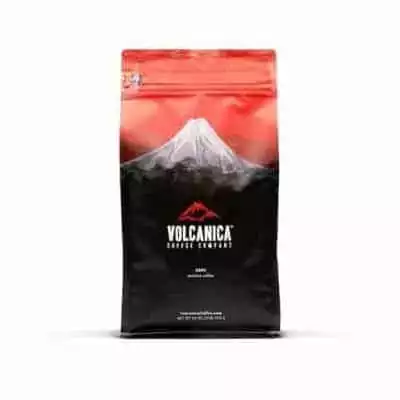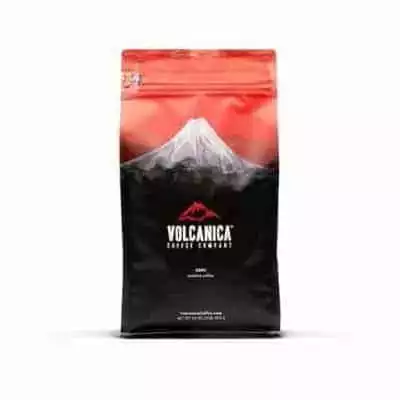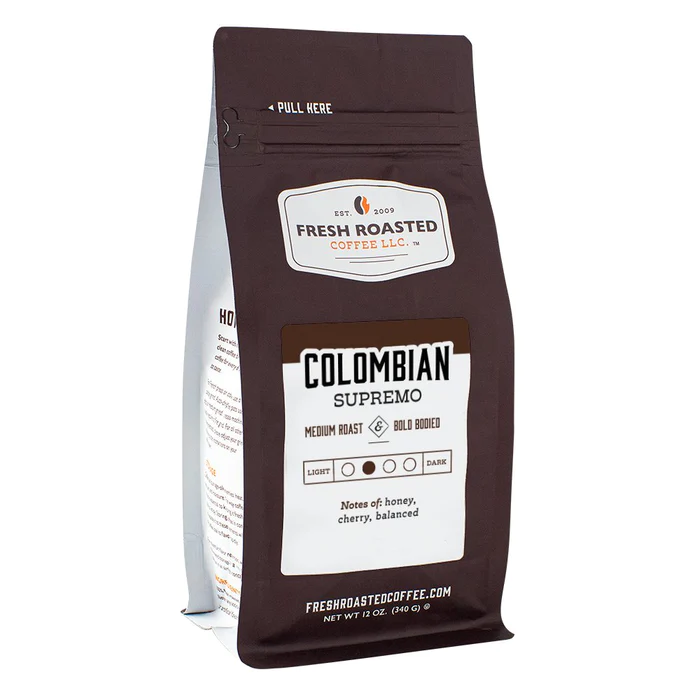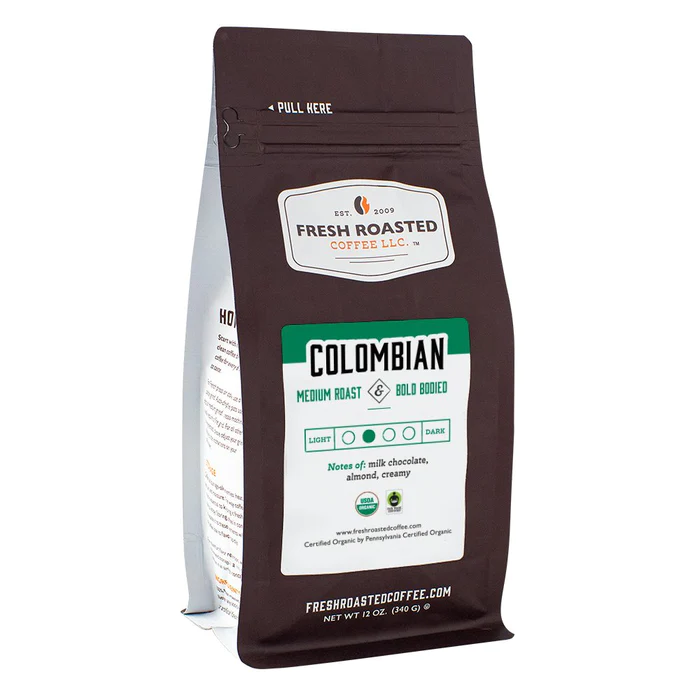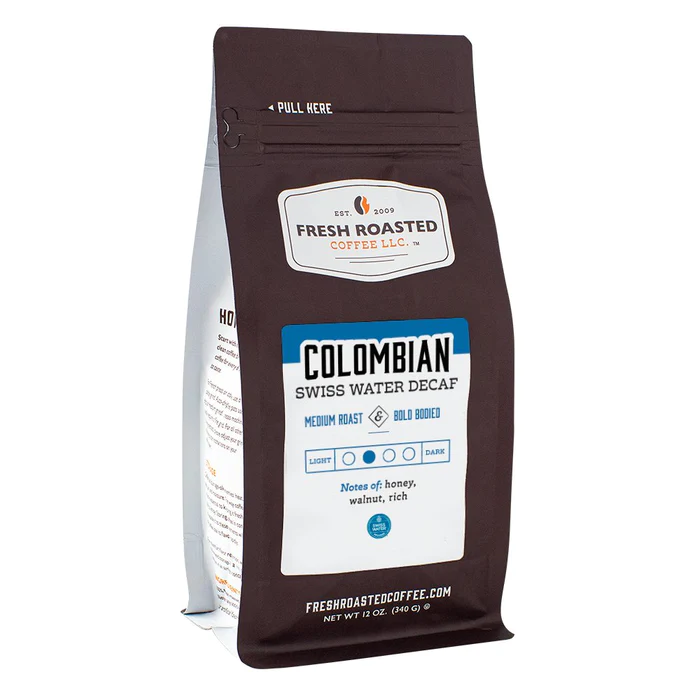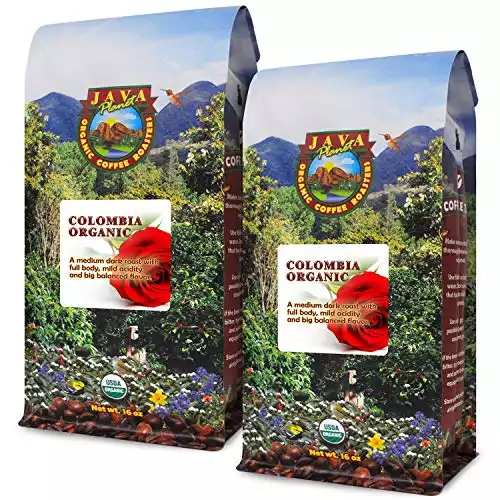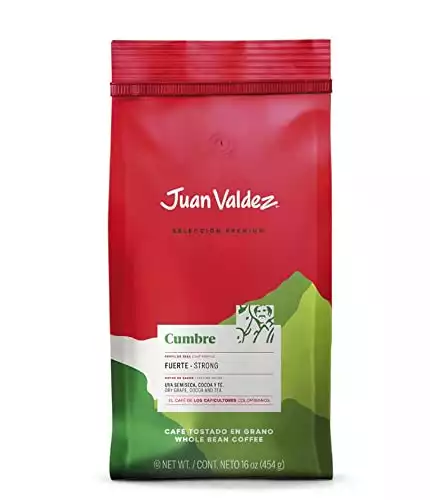Best Colombian Coffee 2024: Barista Tested Review
With hundreds of Colombian coffees on the market, it’s easy to feel overwhelmed by choice.
Lucky for you, I’m a pro on the subject. Not only am I an ex-barista who has sourced whole beans for years. But I also lived in Colombia, where I toured coffee farms and tried different beans throughout the country.
If you’re searching for the best Colombian Coffee, this guide is for you. I sampled several of the best Colombian coffee brands using multiple brewing methods. Plus, I took detailed notes to help you choose the best brew!
Why Is Colombian Coffee So Good?
Colombian coffee is so good thanks to its weather and geography.
Coffee tends to grow best in milder climates. Yes, Colombia is a tropical country. But its many areas of high elevation offer cooler climates.
Colombia also balances sunlight and rainfall with ideal temperatures. And Colombia has lots of rich volcanic soil, perfect for growing coffee.
One of Colombia’s most famous coffee-producing areas is the country’s northern part, near Santa Marta.
This northern mountainous region hosts ideal altitude, rainfall, and temperatures. Some of the best medium-bodied Arabica beans are locally sourced from this location. And many coffee tours occur along the Sierra Nevada.
The surrounding areas of the Andes Mountains also famously produce high-quality Arabica beans. The Colombian Andes feature abundant coffee plantations with fertile green highlands. These areas contribute to the country’s largest coffee export products.
The state of Antioquia also features another famous coffee-growing region in Medellin. Medellin offers the perfect balance of weather, high elevation, and volcanic soil.
Across the country, Colombian coffee production is mostly done by micro-producers. Because of the rugged landscape and high elevations, machine picking is difficult.
So farms must pick and process the coffee cherries by hand. Hand-picking results in a higher-quality end product. Machines can’t tell the difference between a ripe cherry and under-ripe cherry. Humans can.
These micro-producers also belong to the Colombian Coffee Federation.
Formed in 1927, this collective of local farmers made Colombian coffee known worldwide. To this day, the Colombian coffee industry is known for farmers who hand-pick their beans. This personal selection ensures high-quality coffee at all times.
Best Colombian Coffee 2024
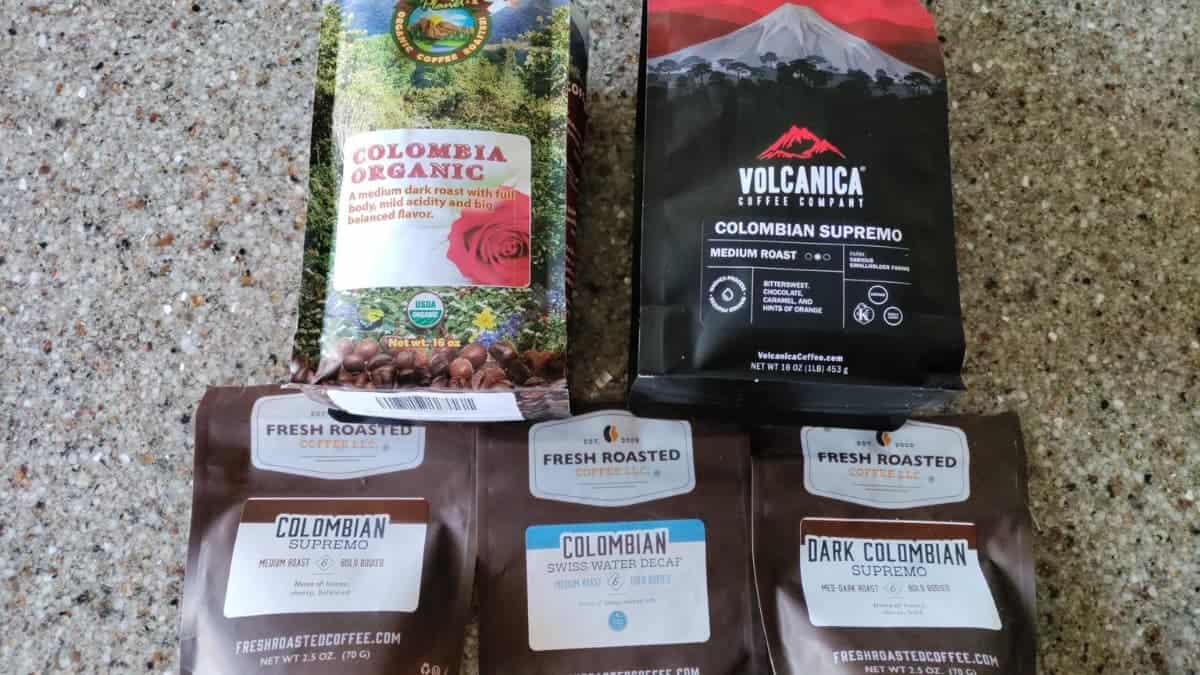
1. Colombian Supremo | Volcanica Coffee
I’m a former barista and a former resident of Colombia. So trust me when I say that the Colombian Supremo is a top-notch entry into the world of Colombian coffee.
Volcanica Coffee sources premium whole-bean coffee from various volcanic regions. Colombian Supremo beans are Rainforest Alliance Certified and Fair Trade. You can also buy these beans decaffeinated.
Floral, fruity and a nutty edge to finish. The perfect flavor profile!
Origin
Volcanica sources these Supremo beans from the rich soils around the Andes Mountains. They are single-origin. So the beans have a more distinct flavor profile than some other Colombian coffees.
Roast
Volcanica Coffee roasts their Colombian Supremo beans to a medium finish. But its aroma and full-bodied profile make you think it’s dark-roasted. So, it’s got more of a medium-dark roast taste to it.
This heavy-bodied roasting method creates a unique coffee flavor and memorable sipping experience.
Process Method
Volcanica Coffee’s Colombian Supremo undergoes the washed process method. Local farmers handpick coffee cherries from coffee trees. Then, they bring them to wet-milled processing stations. Volcanica Coffee uses only Supremo beans in the process. These are the biggest beans available.
Taste and Brewing Method
Colombia Supremo Coffee from Volcanica features a robust, full-bodied, rich flavor. When I brewed them, I picked up on notes of bittersweet dark chocolate and a smooth caramel finish.
There are also hints of nuttiness in this coffee. This sweetness helps balance out some of the bitterness of the coffee bean.
I used French Press, pourover, and espresso to brew this coffee. Of these methods, I found that the French Press extracted the most nuanced flavor profile.
If you’re not used to drinking dark roast coffee, try adding a splash of milk to mellow the bitterness.
2. Colombian Geisha | Volcanica
If you’re searching for a smooth breakfast coffee, I recommend the Colombian Geisha. Although pricier than other options in this guide, these beans are totally worth it.
These Volcanica beans create a smooth brew with a slight sweetness. Plus, they are Kosher-certified.
Origin
The Huila Region is famous for growing beans with the perfect balance of sweetness and acidity. These Colombian Geisha beans are no exception.
Volcanic and mountainous, this region offers coffee plantations fertile soils and high altitudes.
Colombian Geisha beans grow on the top lot of Huila Milagros. Volcanica sources micro-lot crops from small and local producers. This single-origin sourcing cultivates distinct and consistent tasting notes.
Roast
Colombian Geisha features light roast beans. This roast showcases vibrant and complex flavors. (You might hear this light roast referred to as a cinnamon roast by posh baristas. Don’t worry—it all means the same thing.)
Process Method
Unlike the Colombian Supremo, Colombian Geisha beans undergo the natural process method.
Farmers hand-pick the coffee cherries. They then float them in water to separate underripe and overripe fruits.
The coffee cherries sun-dry on raised beds or patios. Farmers do not de-pulp the fruit’s outer layers before drying.
Taste and Brewing Method
Colombian Geisha features unique tasting notes of tropical fruits and flowers. I liked this coffee best as a pourover. This brewing method showcased the nuances of this lighter roast.
I found that brewing this coffee as a French Press clouded the more delicate flavors.
I would also recommend drinking the coffee black rather than adding milk. That way, you can enjoy the full range of this complex flavor profile.
3. Colombian Coffee | FRC
Fresh Roasted Coffee is another one of the best Colombian coffee brands on the market. Their bag of Colombian Coffee offers the perfect balance of sweetness and bitterness.
FRC uses environmental-friendly Loring roasters. Their beans are also certified Kosher, Fair Trade, Direct Trade, USDA Organic, and more.
Origin
FRC Colombian Coffee sources Colombian Coffee from the country’s mountainous and volcanic regions. These beans are single-origin, coming from small micro mills and family-owned traditional coops. Despite sourcing the green coffee beans from Colombia, FRC packages the beans in the US.
Roast
FRC Colombian Coffee consists of medium-roast coffee beans. At this roast, the Maillard reaction develops hints of caramel, toasted nuts, and spice.
Process Method
FRC is famous for its versatility in utilizing various process methods in its beans. They mainly process their Colombian Coffee using natural process. This processing helps to promote the most intense flavors.
Taste and Brewing Method
FRC’s Colombian Coffee has subtle notes of honey and cherry. The sweetness masks the coffee’s bitterness. This balance makes it ideal, even for beginners. Plus, FRC’s Colombian Coffee is bold-bodied, rounded out with hints of chocolate and stone fruit.
Personally, I like that this selection is suitable for many brewing methods. It works well for pourover or French Press. You could even try it in your standard drip brewer. Drink this coffee black, or add a splash of milk if you like.
4. Organic Colombian | FRC
The Organic Colombian is FRC’s current best-selling Fair Trade selection.
It’s more unique and complex than the brand’s basic Colombian Supremo. Plus, it comes with Fair Trade and USDA Organic certifications.
Origin
FRC sources the Organic Colombian from the Sierra Nevada region. This area features high altitudes and fertile volcanic soils. The beans are single-origin, giving you distinct wild yet consistent flavors.
Organic Colombian beans come from co-ops run by local farming families. This localization helps eliminate competitive farming practices in the regional market.
These families unite to preserve local ecosystems and eco-friendly roasters. At the same time, they produce premium-quality beans.
Roast
Like FRC’s Colombian Supremo, Organic Colombian also features medium-roast beans. They come with little oil on the beans’ surfaces. They feature bold bodies with a smooth and velvety finish.
Process Method
FRC’s Organic Colombian undergoes the natural process, removing no pulp or outer layers. The beans are then sun-dried on raised beds to promote even drying.
Taste and Brewing Method
You’ll get hints of chocolate and almonds with FRC’s Organic Colombian. One thing I noticed about this brew is that the coffee was smooth and almost creamy, even without milk.
To me, that meant it didn’t need milk, and drinking it black worked well. I enjoyed it most as a pourover, although you can play with whatever brewing method you like best.
5. Colombian Swiss Water Decaf | FRC
FRC’s Colombian Swiss Water Decaf is ideal for coffee lovers who can’t have caffeine late in the day.
Decaf coffee gets a bad reputation. But don’t underestimate this brew. It still has full-bodied flavors without significant amounts of caffeine.
Origin
FRC sources premium-quality Colombian beans from the Huila Region. In this region, roughly 300,000 producers and local farmers create specialty coffee.
Roast
This selection features medium-roasted coffee beans. Before roasting the beans, FRC decaffeinates the beans using the Swiss water process.
Process Method
As mentioned, Colombian Swiss Water Decaf undergoes a decaffeination process. The process is chemical-free, keeping the coffee safe and flavorful. After decaffeination, the beans are sun-dried.
Taste and Brewing Method
FRC’s Colombian Swiss Water Decaf has sweet flavor profiles of honey and walnut. For the best experience, drink plain black without adding milk, cream, or extra sugar.
I’d recommend whipping this up in the French Press, as it will round and embolden the rich flavors of these beans.
6. Colombian Java Planet
Family-owned Java Planet is another famous coffee brand dedicated to making environmentally-conscious coffee.
The brand’s Colombian coffee is USDA organic-certified, Fair Trade, and Bird Friendly. Plus, it complies with Rainforest Alliance. Colombian Java Planet utilizes 100% organic whole Arabica coffee beans without GMOs.
Small batch roasted to ensure the best flavor. These beans are sure to make you salivate as soon as you open the bag!
Origin
Java Planet sells single-origin coffee to preserve the beans’ distinct and vibrant flavors. They source premium beans from ideal altitudes and fertile volcanic soils.
Roast
Colombian Java Planet features dark roast whole beans for bolder tastes. It consists of deep and robust flavors with a slight hint of acidity.
Process
These Arabica beans are processed using the washed method. So producers separate the cherries’ outer layers from the bean before drying them.
Taste and Brewing Method
Java Planet knows how to balance its flavors perfectly. You get bitterness, sweetness, and acidity toward the end. That’s just the right cup to satisfy your caffeine cravings. I enjoyed brewing these beans in a French Press for an earthier flavor.
However, since they’re so dark, they worked well for espresso, too. Alternatively, you could try these beans in a Moka Pot for a similar kind of flavor.
7. Juan Valdez Coffee Strong Cumbre
A list of Colombian coffee brands wouldn’t be complete without Juan Valdez. In fact, I’ve probably drunk more Juan Valdez in my lifetime than any other coffee brand!
This specialty brand is famous for sourcing some of the best single-origin coffee beans in the world. Juan Valdez Coffee Strong Cumbre has robust flavor profiles that awaken your senses.
Origin
Juan Valdez Coffee Strong Cumbre beans come from Northern Colombia. There, the soil is rich, and the altitudes are high. There is also increased solar radiation, which is ideal for drying the beans.
Roast
Juan Valdez Coffee Strong Cumbre has the darkest-roasted beans on this list. It features the boldest flavors and rich body.
Process Method
These dark-roasted coffee beans undergo a washed process to ensure maximum flavor extraction.
Taste and Brewing Method
This whole-bean coffee features a pronounced aroma with low acidity. It tastes bold and robust, so I recommend adding steamed milk for extra sweetness.
Although I tried it as a French Press and pourover, I found this particular blend tasted great as a cappuccino. The creamy milk helped balance out some of the darker flavors of the roast.
Colombian Coffee Buying Guide
Coffee Is Big Business in Colombia
Colombia grows a lot of coffee, it’s in fact the world’s 3rd largest grower of coffee. And unlike many coffee regions around the world, Colombia grows all four types of beans: arabica, robusta, excelsa, and liberica.
Of the four, arabica beans are the most common in Colombia.
But farming isn’t the only part of the Colombian coffee industry. We need to talk about the tinto.
A tinto is a strong, dark coffee, usually taken with sugar and no milk. You can buy a tinto just about anywhere on the streets in Colombia for about $0.50 per 4-ounce cup.
Vendors brew this drink for a long time to generate bolder flavors. These brews typically use low-quality beans that aren’t good enough for export. That’s the reason why it’s sold with sugar—to cover up the less-than-ideal coffee!
Still, that never stopped me from enjoying the odd tinto here and there, and it shouldn’t stop you either! It’s a Colombian coffee tradition.
What Is Colombian Supremo?
You might see Colombian beans with the word “Supremo” on their packaging. Don’t mistake this for having better-quality or better-tasting beans.
Colombian Supremo simply means the beans are larger. So long as it is consistent, bean size does not impact the coffee’s cupping profile.
Coffee Varies Depending on Region
The taste of Colombian coffee also varies depending on the country’s region.
For instance, beans in Northern Colombia grow at higher altitudes and cooler temperatures. These conditions lengthen the ripening process. So the beans have more time to develop complex flavors. What that means for the coffee drinker is a brew with fuller body and lower acidity.
Then there’s also Central Colombia, where flavors are more balanced. Beans from this region normally are bitter and sweet at the same time. You’ll get subtle tasting notes with acidity.
Finally, you’ll taste higher acidity in Southern Colombian beans. Temperatures are higher here, so the coffee cherries ripen faster.
Roast Type
Colombian coffee beans usually do best as medium and dark roasts. But it depends on the region of origin.
For example, beans that grow at lower altitudes, such as those in Tolima and Santander, do best as dark roasts.
How Best to Brew It
The best way to brew each coffee depends on roast type, process method, origin, and flavor profiles.
If you prefer espresso drinks, add steamed milk to balance dark roast beans with higher acidity.
Or, if you want a fuller-bodied brew, prepare medium-roasted beans in a French Press.
In most cases, I find that Colombian coffees do well as French Press and espressos. But some of the best Colombian coffee brands also shine as pourovers.
The Final Verdict: Colombian Coffee
Colombia features ideal growing conditions, climate, and fertile soil. These elements result in some seriously good coffee.
Colombian Supremo from Volcanica is my top pick when it comes to the best Colombian coffee. But I also have a soft spot for Juan Valdez Coffee Strong Cumbre after my time living in Colombia.
If you want something that won’t keep you up at night, the FRC’s Colombian Swiss Water Decaf is a tasty runner-up.
Colombian coffee is well-worth trying, whether you’re after eye-popping brews or something milder. Try making a tinto out of one of these coffees yourself. You may just find your new favorite brew.

